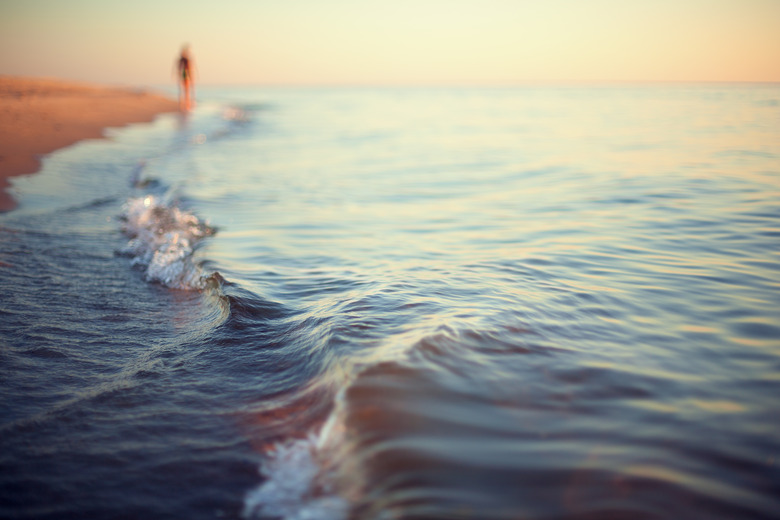If you don’t live near the sea and want to do experiments on seawater, you can easily replicate seawater at home. Sometimes, seawater is used in holistic treatments, farming and air conditioning. Seawater is made up of water, salt and other minerals, with the exact composition varying by location.
TL;DR (Too Long; Didn’t Read)
To make seawater at home, add 35 grams of salt to a beaker, and then add tap water until the total mass is 1,000 grams, stirring until the salt is completely dissolved in the water. Tap water often contains lots of natural minerals found in seawater, such as magnesium and calcium.
Properties of Seawater
The water in the world’s oceans contains salt and other minerals. Every liter of seawater contains approximately 35 grams of salt (mostly sodium chloride) dissolved in it. In other words, ocean seawater has a salinity of about 3.5 percent (35 parts per thousand). Seawater also contains magnesium, potassium, sulfur, calcium and bromine.
Making Seawater at Home
To replicate seawater at home, weigh 35 grams of salt and add it to a beaker. Add tap water until the total mass of the solution inside the beaker is 1,000 grams, stirring until the salt is completely dissolved (remember to take the weight of the beaker itself into account). Rock salt, sea salt, kosher salt and table salt can all be used to make seawater at home. To make hypersaline water water, which is saltier than seawater, increase the amount of salt to 50 grams. Oceans with high temperatures and confined circulation, such as the Red Sea, have high rates of surface evaporation and little fresh water inflow from rivers and, as a result, have higher salinity.
If you want to make seawater for a saltwater aquarium, you must buy commercial sea salt from a pet supply store. This is specially made for aquariums and contains necessary trace elements in concentrations consistent with natural seawater that you don’t get in regular rock salt, sea salt, kosher salt or table salt.
Dangers of Drinking Seawater
When you drink seawater, you take in salt. The human body can safely process salt in small amounts; for example, the body’s cells require sodium chloride to preserve its chemical balances and reactions. However, seawater contains more salt than is safe to ingest, and too much of it can cause great harm or even death. This is because your kidneys can only produce urine that is less salty than seawater. To remove all that excess salt from the body, you have to urinate more water than you consume. The water in your cells also moves, through osmosis, outside the cells to deal with the extra salt, causing the cells to shrink. Your body eventually stops being able to regulate the sodium concentration, and severe dehydration sets in. You get thirstier and thirstier, suffer side effects like headaches and nausea, and at some point, die of dehydration.

